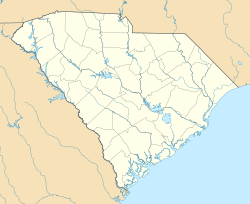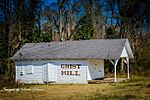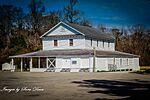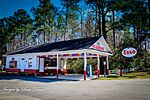Galivants Ferry, South Carolina facts for kids
Quick facts for kids
Galivants Ferry, South Carolina
|
|
|---|---|
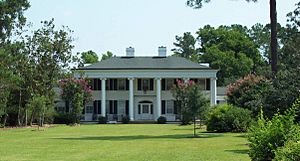
John Monroe Johnson Holliday House
|
|
| Country | United States |
| State | South Carolina |
| County | Horry County |
| Established | 1790s |
| Time zone | Eastern |
| ZIP Code |
29544
|
| Area code(s) | 843 |
Galivants Ferry is a small community in Horry County, South Carolina, United States. It's not an official town with its own government. You can find it on the Little Pee Dee River, west of Aynor, along U.S. Route 501.
Contents
History of Galivants Ferry
Early Days and the Ferry
Galivants Ferry first appeared in official records in 1792. Back then, it was called Elirsee's Landing. A man named Richard Gallivant was given permission to run a ferry boat here for 14 years. People paid him in British money to cross the river.
By 1795, the ferry was mentioned again in South Carolina laws. Richard Gallivant still ran it, but now people paid in U.S. dollars. This ferry and the road leading to it were very important. They connected what is now Marion County to Horry County. Because they were so important for everyone, the road and ferry were kept up using public money.
In the 1800s, the first wooden plank road was built through the swamp to the ferry. Even today, when the water is low, you can still see parts of an old fertilizer barge. It looks like the ferry boats from the early 1800s.
Life in Western Horry County
Unlike other parts of South Carolina with big farms, western Horry County stayed much the same as it was in the early days. People mostly farmed on small plots of sandy, swampy land. This area was hard to reach because of many rivers and swamps. Because of this isolation, people sometimes called its residents the "Independent Republic of Horry."
The Holliday Family's Impact
Joseph William Holliday had a tough start in life. He was an orphan and lost his inheritance. He ended up working for relatives who didn't care for him. But Joseph worked hard and taught himself. He eventually became very successful.
In 1852, J. W. Holliday came to Horry County. He leased a large area of pine forest to produce "naval stores." These were products like turpentine, pitch, and tar made from pine trees. They were used on wooden boats to protect them. He sent these products down the Pee Dee River to Georgetown.
By 1865, the Civil War destroyed Holliday's business. He then moved to Galivants Ferry. In 1869, he opened a store by the Little Pee Dee River. This store grew to be the main place for farmers in western Horry County to get their supplies.
J.W. Holliday was also a smart farmer. He is remembered for bringing a new way of growing tobacco to Horry County. After him, his family at Galivants Ferry continued to help the area's economy and serve the public.

George J. Holliday, Joseph's son, went to Harvard University. He came back to South Carolina and made his father's business even bigger. He opened more stores in Aynor and Jordanville. While other areas struggled with a bug that destroyed cotton, George tried growing tobacco in 1900. By the 1920s, he had expanded tobacco farming across the region. Horry County soon became the biggest tobacco producer in South Carolina. George Holliday became the largest tobacco grower in America.
During the Great Depression, money was very scarce. George Holliday continued to supply people even when they had no cash. He created his own form of money called "scrip." Locals could use this scrip to buy goods at the Holliday stores. Many farmers were "sharecroppers," meaning they lived on the land and shared their crops with the landowner. At its busiest, the Holliday farms supported between 1200 and 1500 people in western Horry County.
Political Gatherings
In 1876, a famous political event took place in Galivants Ferry. General Wade Hampton, a Civil War hero, gave a speech as he ran for governor. These campaign speeches were called "Stump Speakings."
In 2004, Galivants Ferry celebrated 128 years of being the longest-running site for Democratic campaign speeches in America. In the early 1900s, Galivants Ferry was important for both tobacco farming and these political speeches. George Holliday's sons, Joseph and John Monroe, continued the family's farming success. They also kept supplying the community with farm products and necessities.
Today, the fifth generation of Hollidays continues the family's work. Even though tobacco farming is changing, they carry on the traditions. In 2023, Brandon Craig is expected to become mayor after the area is officially added to a town.
Historic Buildings
The Galivants Ferry Historic District was added to the National Register of Historic Places in 2001. This means its buildings are important historical sites. These buildings include the church, homes, a grist (grinding) mill, a packhouse, storehouses, and different types of barns, like the big red barn. The John Monroe Johnson Holliday House, a two-story white brick house, was finished in 1950. It was built based on a house George Holliday had built in the 1920s, which burned down in 1943.


